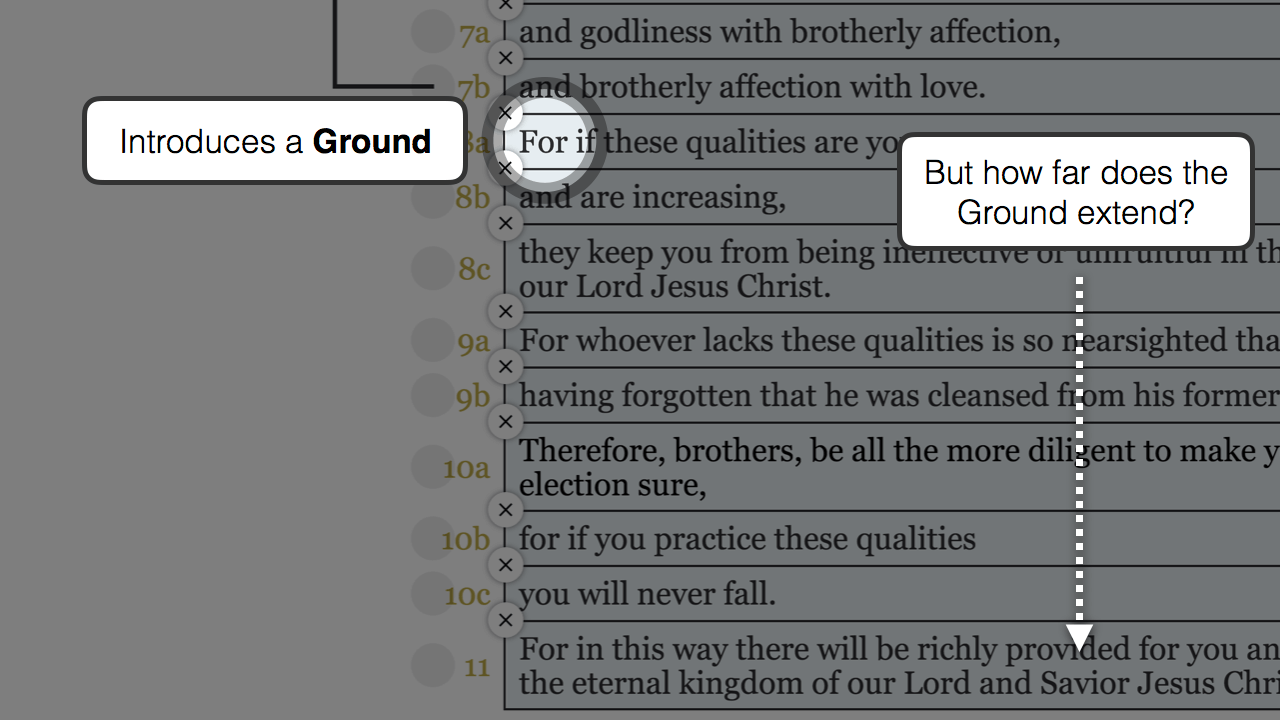Lesson 8 | Levels of logic
Determining scope
How far a relationship extends
Conjunctions are wonderful things, shedding light on how the truths of God work together. They are often an incredible aid in determining the logical relationship intended by the author, but there is one thing they do not tell us. We are on our own in determining just how far relationships extend.
Consider, for example, this invalid bracket of Ephesians 4:20-24.
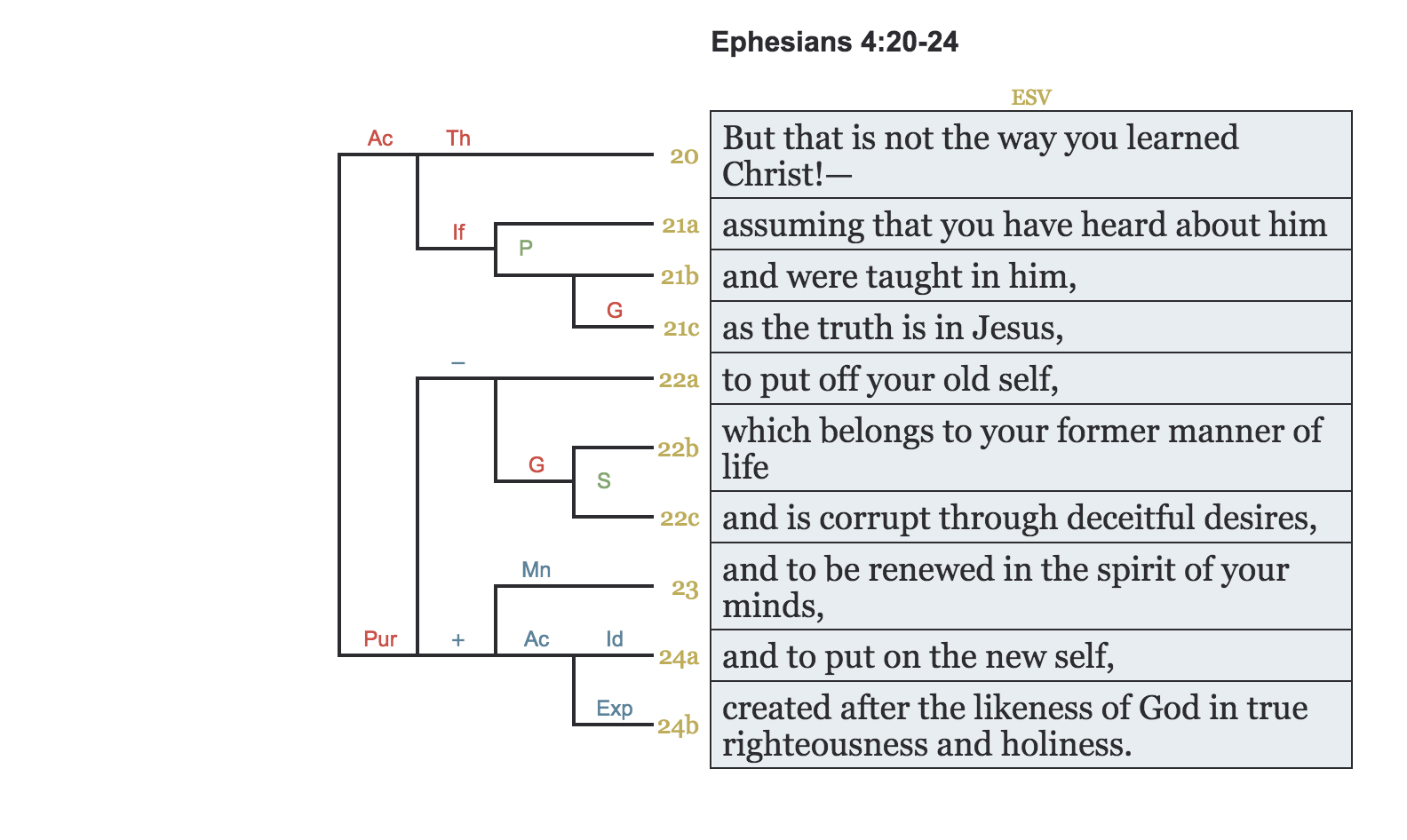
The “and” that begins 21b is a subtle indicator of the Progression relationship between hearing about Jesus and being taught in him. But this conjunction tells us nothing about the scope of each side of this relationship. The above bracket is wrong because it gets the scope of the second side of the relationship wrong. It does not recognize that the idea of being taught in Jesus continues beyond 21c, all the way to the end of the passage. That is, verses 22-24 are not telling us the purpose for which we have heard of and been taught in Jesus (as this bracket suggests), but rather they tell us what we were taught. Thus, there should be a bracket spanning all of 21b-24b since all of this is the second side of the Progression.
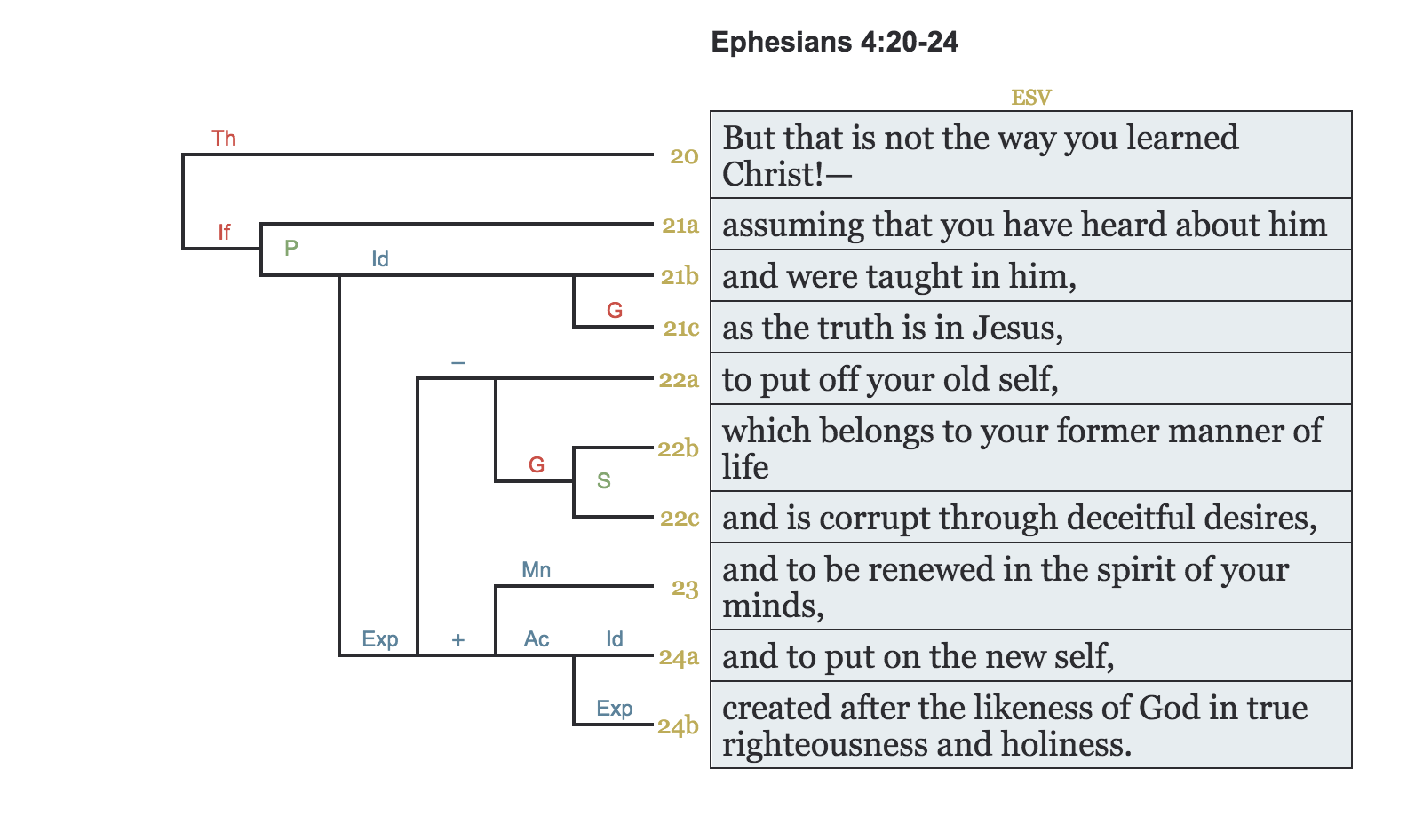
Using the Discourse module to change a bracket's scope
The bracketing module is very flexible when it comes to scope.
Discovering the need to change the scope of a relationship.
When this happens, there is no need to delete the bracket and start afresh.
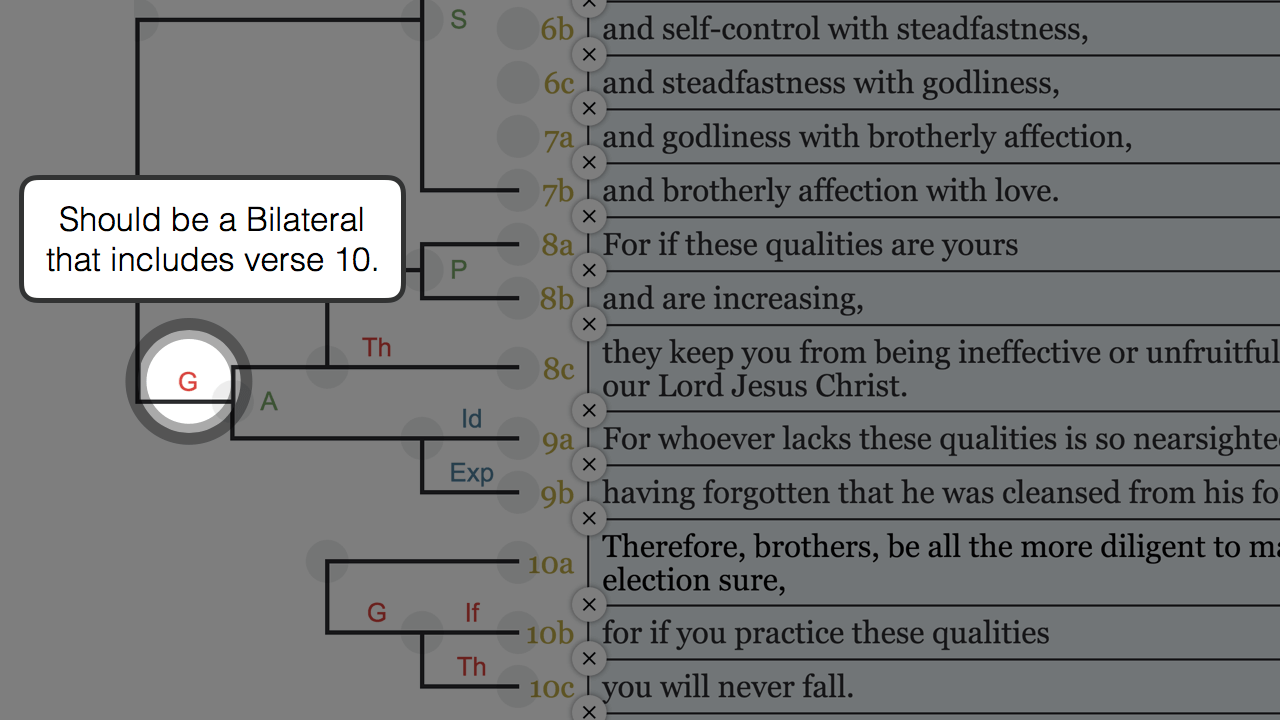
The Discourse module allows you to drag the bracket dots.
In this way, you can change the relationship's scope.
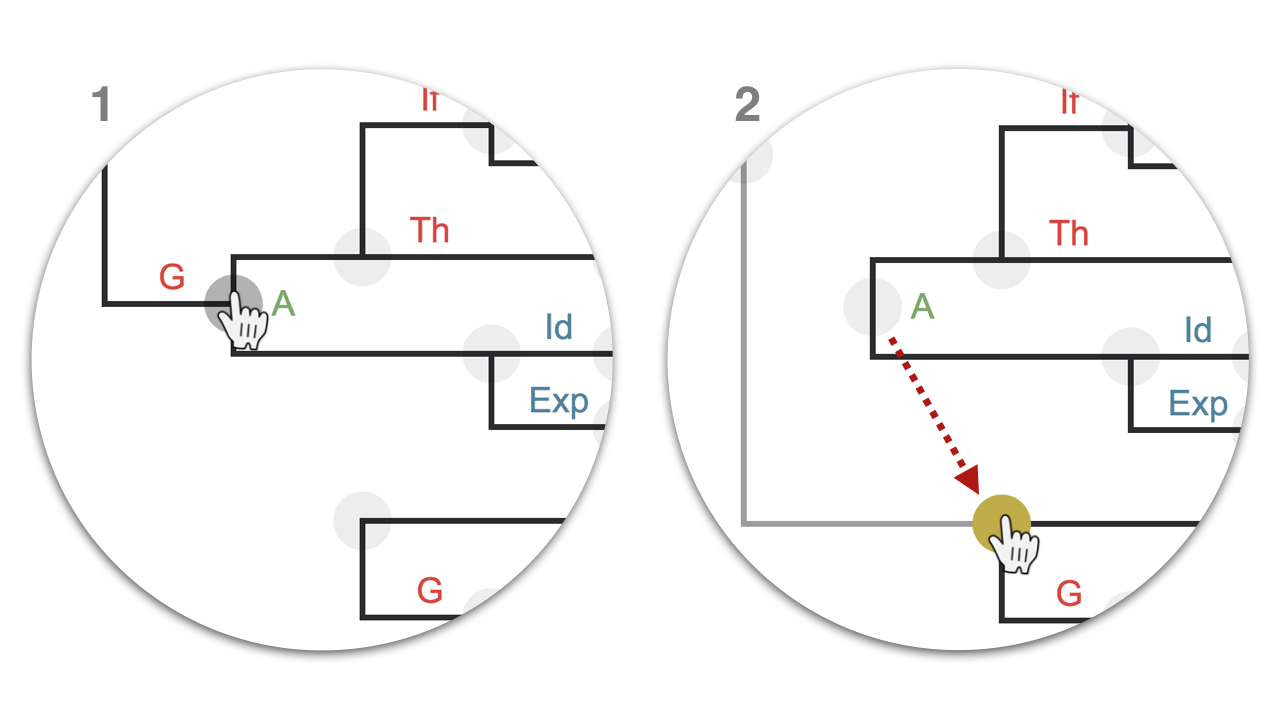
You can also create a new bracket underneath an existing one.
The Discourse module makes this really easy.
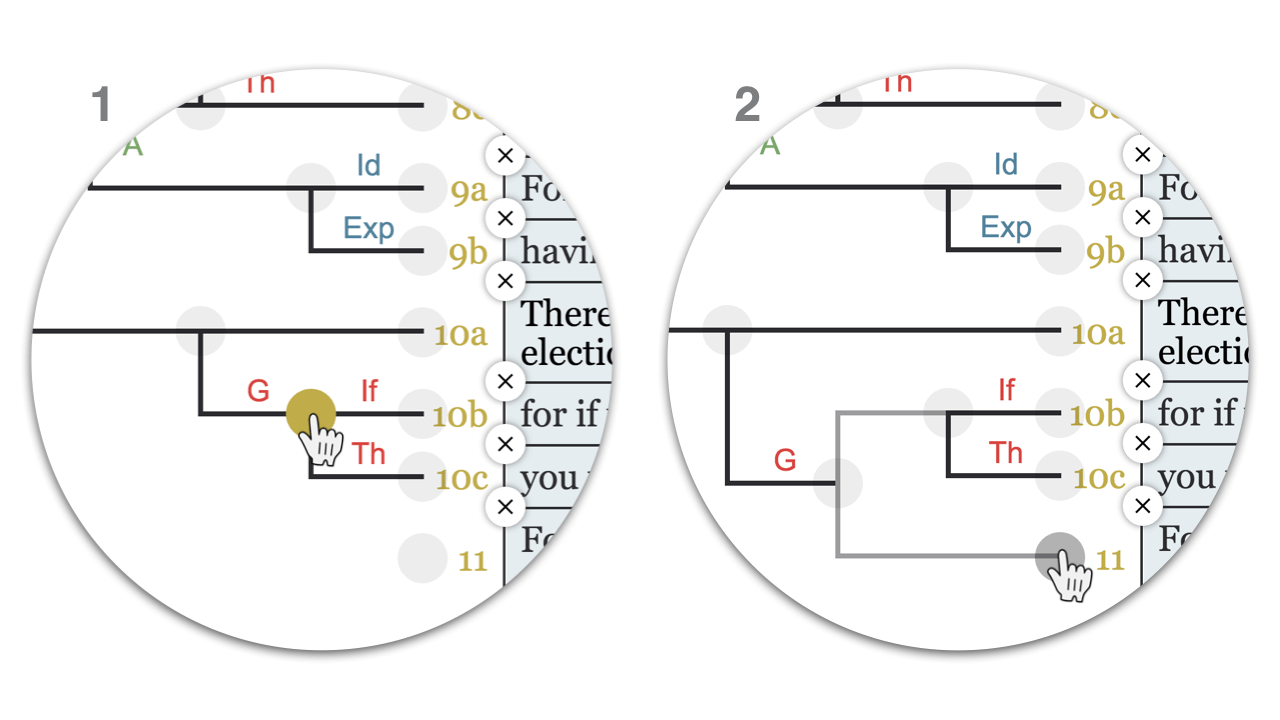
But there is one thing the module cannot do!
Determining what the scope of a relationship ought to be still lands on you.
